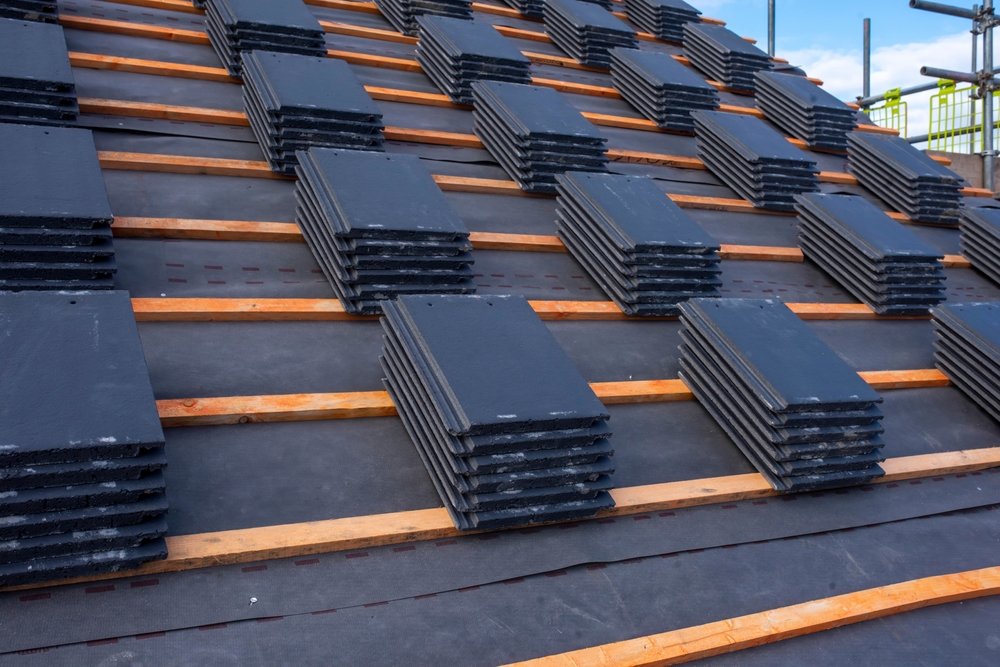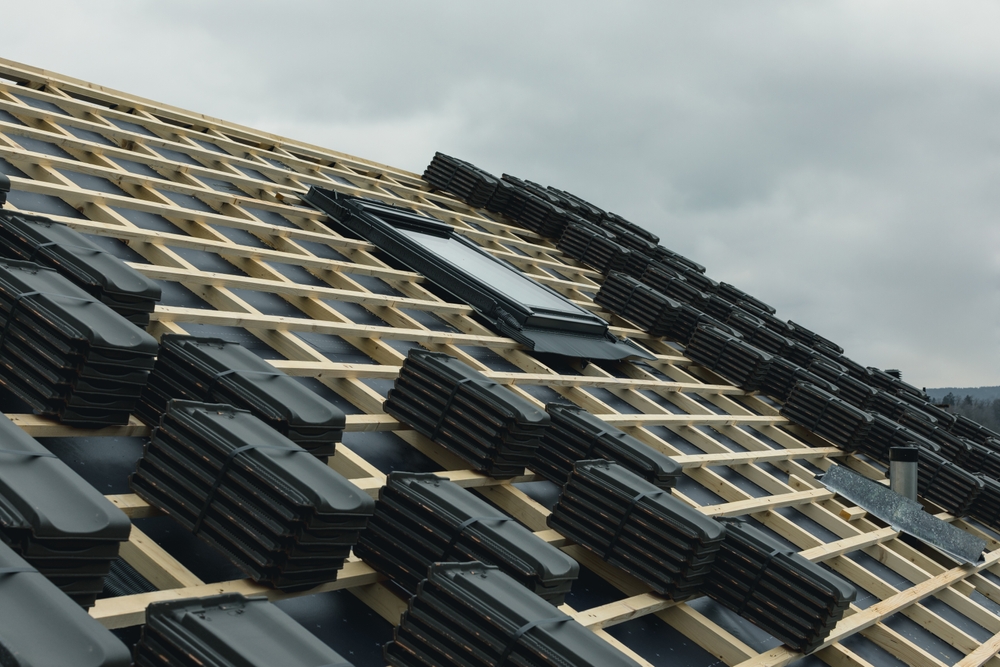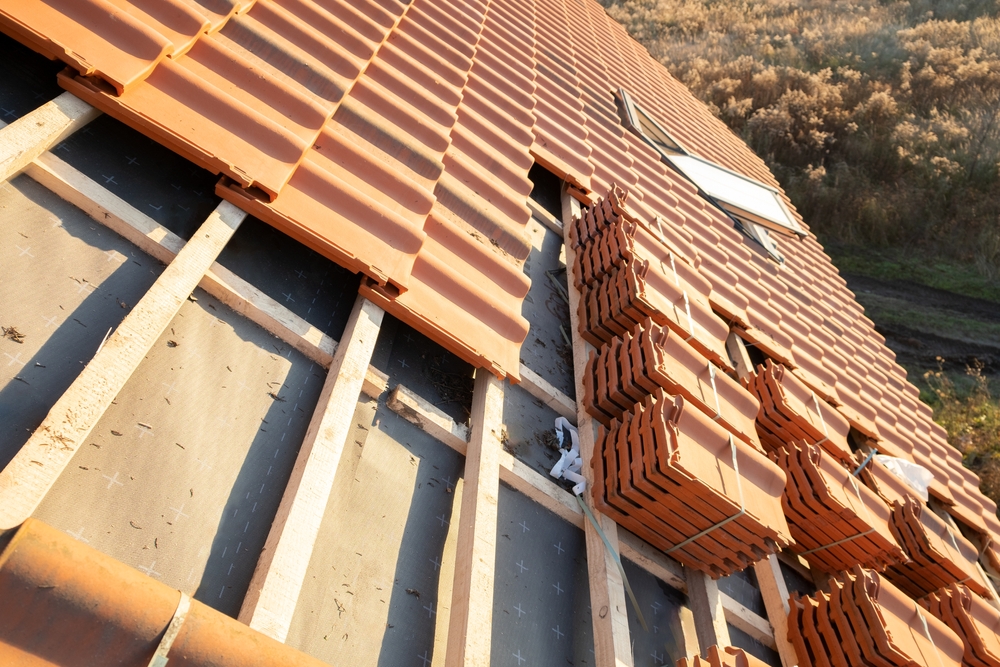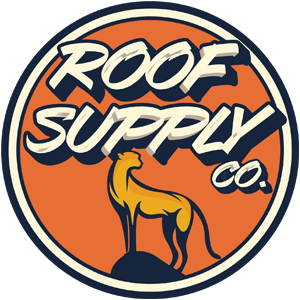Making an informed decision about roofing materials shapes how well your property withstands weather challenges and maintains its visual appeal over time. Different materials offer varying levels of protection, efficiency, and aesthetic value that directly influence your building’s comfort and operational costs. At Roof Supply by G&F San Diego, we guide property owners through the selection process, helping you understand each material’s characteristics and identifying options that align with your structural requirements, climate considerations, and financial parameters.
Roofing Materials

Understanding Roofing Components
Roofing materials serve as your building’s first line of defense against environmental forces like precipitation, wind, temperature extremes, and UV exposure. The construction industry has developed numerous material categories over the years, each engineered to address specific performance requirements and architectural applications. Material selection determines not only your initial project costs but also influences ongoing expenses related to upkeep, energy usage, and future replacement needs.
Today’s market offers property owners unprecedented variety in roofing material choices, from time-tested natural products to cutting-edge engineered alternatives. Each category brings distinct benefits regarding lifespan, load-bearing characteristics, fire safety, sustainability credentials, and design flexibility. Evaluating these attributes against your building’s structural limitations, regional weather patterns, regulatory requirements, and design vision helps you identify the optimal solution that delivers both immediate and lasting value.
What Roofing Materials We Offer
We provide complete support throughout your roofing material selection and installation process, covering everything from traditional options to innovative contemporary solutions. Our team’s expertise ensures you receive accurate information and skilled workmanship regardless of which material category you choose.
Wood Shake and Shingles
Wood shake and shingles deliver organic beauty and distinctive texture that synthetic alternatives struggle to replicate authentically. These natural products provide inherent insulation benefits and age gracefully with exposure, developing rich color variations that enhance their appeal. This material category suits properties featuring traditional architectural elements, though successful long-term performance depends on consistent upkeep and works best in regions without excessive moisture or extreme temperature swings.
Clay and Concrete Tiles
Clay and concrete tiles stand among the most resilient roofing material options available, frequently providing service for half a century or longer with appropriate installation and care. These products deliver superior resistance to fire and wind forces while offering thermal mass properties that help stabilize interior temperatures and lower climate control expenses. Their diverse range of shapes, hues, and surface treatments makes them compatible with Mediterranean, Spanish Colonial, and modern design schemes, all while demanding less frequent maintenance interventions than numerous alternatives.
Synthetic Roofing Materials
Synthetic roofing materials represent advanced manufacturing techniques that blend performance optimization with design adaptability, creating lightweight products that replicate the look of slate, wood, or tile. These engineered solutions frequently utilize post-consumer recycled components, positioning them as eco-conscious options that maintain high performance standards and visual quality. Synthetic products demonstrate superior resistance to color degradation, structural compromise, and weather damage compared to certain natural materials, while their reduced weight simplifies structural requirements and can decrease installation expenses.

How We Guide Your Roofing Material Choice

Why Choose Us for Roofing Installations
Roof Supply by G&F San Diego has accumulated deep expertise in roofing materials through sustained involvement in the construction industry spanning varied project scopes and building categories. We maintain current awareness of emerging products, evolving installation methods, and shifting code standards, positioning you to capitalize on recent developments in roofing innovation. Our established connections with reputable manufacturers enable us to obtain genuine, warranty-backed products at fair prices while upholding the elevated standards you require.
Our approach centers on straightforward dialogue and helping you grasp your choices without sales pressure or unnecessarily complex terminology. Each building presents distinct challenges, and we invest effort to align roofing materials with your particular circumstances instead of advocating generic recommendations. We aim to forge enduring partnerships with customers who value our dedication to superior workmanship, accountability for our installations, and accessibility when future guidance or assistance becomes necessary.

We Help You Invest in Quality Roofing Materials!
Your building’s roof constitutes a major commitment to structural protection, interior comfort, and asset worth. Selecting appropriate roofing materials maximizes your investment returns through dependable functionality, thermal efficiency, and visual impact that endures across decades. When you’re prepared to examine your alternatives and partner with specialists who emphasize your contentment, Roof Supply by G&F San Diego will be ready to assist.
Get in touch at (619) 878-1531 today to arrange your consultation and identify which roofing materials optimally address your building’s demands and personal tastes. Check us on Google Maps to view our finished projects, discover care strategies for various material categories, and learn about advances in roofing products and application techniques.
FAQs
How to choose a roofing style?
Choosing a roofing style involves considering your property’s architectural design, local climate conditions, building code requirements, and personal aesthetic preferences. Start by examining what roofing styles complement your home’s architecture, then evaluate which materials perform well in your region’s weather patterns while fitting within your budget. Consulting with roofing professionals helps you understand the practical implications of different styles and ensures your choice balances visual appeal with functional performance and long-term value.
What is the best material for a flat roof?
The best materials for flat roofs include modified bitumen, TPO (thermoplastic polyolefin), EPDM rubber, and built-up roofing systems, each offering specific advantages for different applications. Modified bitumen provides excellent durability and is relatively easy to repair, while TPO and EPDM offer energy-efficient, reflective surfaces that reduce cooling costs. Your choice should consider factors like your climate, building use, budget, and whether you need roof access, as each material performs differently under various conditions.
What are the different types of roofs?
Roofs come in various configurations including gable, hip, flat, shed, mansard, gambrel, and butterfly designs, each suited to different architectural styles and functional needs. Beyond structural design, roofs differ by the materials covering them, such as asphalt shingles, metal panels, clay or concrete tiles, wood shakes, slate, and synthetic products. The combination of roof design and covering materials determines your roof’s appearance, performance characteristics, maintenance requirements, and lifespan.
What is slate roofing material?
Slate roofing material consists of natural stone quarried from metamorphic rock and split into thin, durable tiles used for premium roofing applications. This natural material offers exceptional longevity, often lasting 75 to 100 years or more, along with outstanding fire resistance and a sophisticated appearance that enhances upscale properties. While slate represents a significant investment and requires adequate structural support due to its weight, its minimal maintenance needs and extraordinary durability make it one of the most cost-effective choices over the roof’s lifetime.
How many layers of material does a roof have?
A typical roof system consists of multiple layers including the structural roof deck, underlayment or moisture barrier, and the outer roofing material that provides weather protection. Depending on the roofing type, additional layers may include ice and water shields, ventilation materials, insulation, and various flashing components around penetrations and edges. Understanding these layers helps you appreciate why proper installation matters, as each component plays a specific role in protecting your property from water infiltration, temperature extremes, and structural damage.

